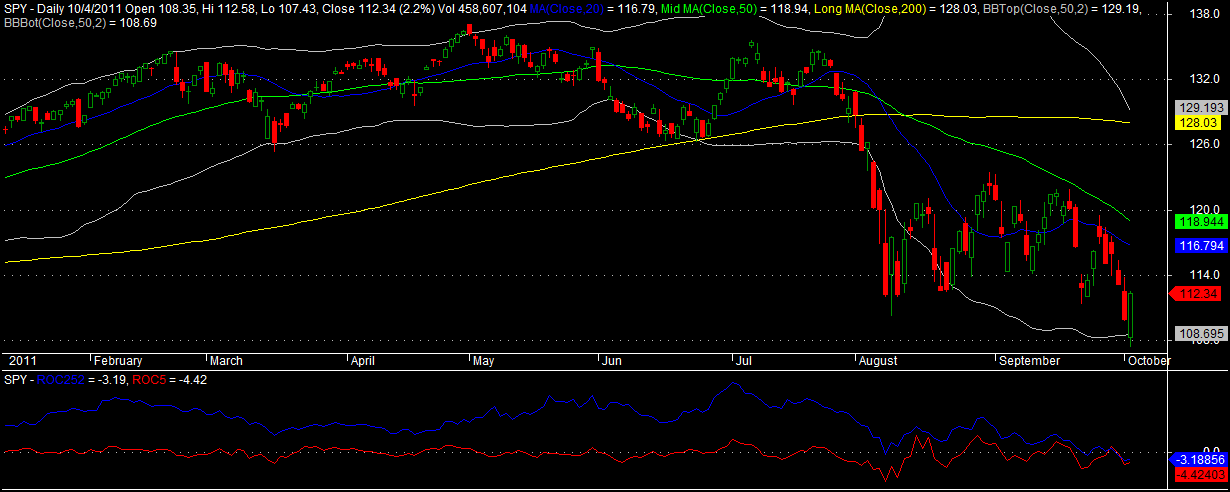Today, after trading beneath the 50 day moving average for more than 50 days (52 days, to be exact), the S&P 500 surged to close above the average. What can we expect going forward in the short and intermediate time frames?
You have likely already heard the hubbub across the financial landscape about the S&P and Dow Jones averages closing above their 50 day moving averages (MA50). Frankly, these averages are helpful only if they are not used to make binary trading decisions. Just because the index closes above it, or below it, doesn’t mean one should immediately go out and buy or sell. However, a close above the MA50 does serve as a warning that a change of trend may be underway. In fact, if we do use it as a binary signal, the decision may be to buy the first pullback after a close above the MA50 (the results below will illustrate why this may be a profitable decision).
But I digress.
What we want to look at is how we should incorporate the amount of time spent beneath the average into our trading decisions. Surely, being back above the MA50 is a positive development, but just how excited should we be? Should we be chomping at the bit to initiate new positions, or should we be more patient? If we consider how long the index has traded beneath its MA50 before again closing above it, we can answer that question.
The Rules:
Buy SPY at the close if
- It has traded for more than X days beneath the MA50 and then closes above the average
- Sell Y days later
No commissions or slippage included. All SPY history used.
The Results:

Analysis of Results:
Let’s start with the green line. There were 123 setups and 34 trades held the full 100 days. A market that has traded for just a few days beneath the MA50 and then closes above it may have completed a healthy pullback. Or, the green line may represent a market that has vacillated around the MA50. Regardless, this setup is the least volatile going forward but also achieves the smallest returns after 100 days. Why the low volatility and low returns? My guess is that a market that is vacillating around the MA50 is may tend to have some momentum remaining from the previous uptrend (hence, the low volatility) but may also be subject to increasing downward pressure (hence the lower returns).
The blue line, with 19 setups and 16 trades held the full 100 days, is more rare. We can see that a market that has traded for a month or so beneath the MA50 will be more volatile going forward, after it regains the MA50.
The red line is the closest model to our current market. This condition is rare. With over 17 years of SPY data available, there were only 6 setups, and all 6 were held for the full 100 days. This setup is the most volatile going forward but also achieves the highest returns after 100 days. Note the multiple pullbacks averaging near -2%.
What Does It All Mean?
The bottom line is this: In all of the models, SPY does not achieve an average return greater than 1% until 55 trading days after the setup. The >25 and >50 models do not achieve an average return greater than 1% until 4 months (90 trading days) have passed. The risk of another downside move appears to be greater than that of an upside move.
Patience will be a profitable virtue.
While there is growing evidence that the bear market may be waning, volatility will remain very high. Going forward, this is still a trader’s market. There will be plenty of pullbacks to buy and rips to sell. Putting some cash to work on the dips may be appropriate for longer-term investors, but be prepared for a volatility whipsaw.
Comments »






